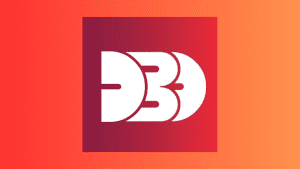Even with an annual revenue of $5.9 trillion, the cost of insurance keeps going up. Insurance companies demand user data without any transparency into what biases they’ve used to calculate the cost of your premium.
This is where Web3 enables users to take control of their own data only sharing the relevant information needed because gone are the days of needing to go to an insurance company to get your cover or put your blind trust in a broker.
Imagine insurance hyper-personalized, on-demand, and tailored to your needs with a web3 insurance broker.
Web3 insurance brokers take an asset-first approach where users first register and update their asset information to earn tokens that they can sell as rewards.

Web3 insurance is a type of insurance that protects users of decentralized applications (dApps) and decentralized finance (DeFi) protocols from losses incurred due to hacks, fraud, or other unforeseen events.
These web3 insurance companies give power to the insured while making sure that customers can choose what they want to insure against, what events, and the specific period of time they want to be insured.
Insurepreneurs can also invest in NFTs, underwriting through default staking to earn returns as well as other rewards.
For instance, Day by Day is a web3 insurance company that not only insures their customers for specific events but also rewards them for counting on their services.

Using emerging technologies, Day By Day removes current insurance processes and administrative constraints to deliver value as well as security to customers with their app.
Curious about learning how web3 insurance works?
In this post, we’ll unravel its potential and shed light on how its shaping the insurance industry at large.
Web3 Insurance
Insurance can be defined as a contract between an insurer and an insured, in which the insurer agrees to pay for losses incurred by the insured in exchange for a premium.
The insured can be an individual, a business, or even a government while the losses can be caused by a variety of events, such as fire, theft, or natural disaster.
Incidentally, web3 insurance is done on the basics of web3 technologies. It makes use of NFTs, DeFi policies, and traditional liquidity systems.
Not only does it allow for a more secure and transparent way to protect assets. Web3 insurance also gives people more options for risk management and investment. This helps them take care of their financial needs in a more customized way.

In the world of insurance, trust is everything. Customers need to be confident that their insurers will keep their promises, and insurers need to be confident that their customers will fulfill their own obligations.
In the past, only insurance companies approved by the government could initiate contracts. However, with the introduction of blockchain and smart contracts into the system, ownership totally shifts to the community that shares the blockchain.
This shift is a product of the revolutionization of web3 technologies which is then reflected in governance, as blockchain protocols oversee the network collectively.
All these elements when combined together give insurers the power to create and thwart hacking risks. In fact, according to a report by Curacel.co, automation of processes can reduce operational expenses by 25% and curb fraudulent claims.
With all these in place, customers can now choose to buy insurance from a platform rather than a single insurer which leads to the levelling of the playing field and the introduction of better healthy competition.
See also: The Best Web3 Data Tools
Advantages of Web3 Insurance
Web3 insurance can offer a number of advantages over traditional insurance. For example, it uses the feature of web3 technology to prevent the exploitation of contracts, protects users’ privacy, and keeps transparency through decentralization.
Here are some other benefits web3 brings to the insurance industry:

Efficiency: Web3 can help streamline the insurance process, making it more efficient and cost-effective for both insurers and policyholders.
Transparency: Web3 can help to increase transparency in the insurance industry, making it easier for consumers to compare policies and understand their coverage.
Security: Web3 can help to improve the security of insurance data, making it less vulnerable to fraud and cyberattacks.
Accessibility: Web3 can help to make insurance more accessible to people who have been traditionally excluded from the market, such as those with low credit scores or who live in rural areas.
Personalization: Web3 can help to personalize insurance policies, making them more tailored to the individual needs of each policyholder.
Innovation: Web3 can help to drive innovation in the insurance industry, leading to the development of new products and services that meet the needs of consumers.
See also: 8 Applications for Blockchain Technology
Use Cases of Web3 in Insurance
Web3 insurance has had a lot of engagement over the years. Here are some other use cases of web3 in the insurance industry:

- Parametric Weather Insurance: This type of insurance pays out based on the occurrence of a specific weather event, such as a certain amount of rainfall or wind speed. This can be helpful for farmers and businesses that are vulnerable to weather-related damage.
- Decentralized Health Insurance: Decentralized health insurance is a type of insurance totally based on blockchain technology. In decentralized health insurance, the insured individual(s) are allowed to pool their resources together to create a self-funded health insurance plan. This can be done without the intervention of a traditional insurance company.
- Property Insurance: In regions that are prone to life-threatening natural disasters, the introduction of web3 insurance to cover situations where these disasters can lead to the loss of properties such as homes is not just providing a safety net for homeowners but also proving itself as a bedrock in web3.
- International Travel Insurance: Travellers and explorers are now turning to platforms that offer decentralized systems of insurance. In occasions of flight delays, disruptions, or any other cancellations, the records available on a blockchain removes the need for claim processing and instead, opens the way for automatic claims processing handled by smart contracts.
- Tokenized Asset Assurance: Tokenized asset assurance is a use case of web3 in the insurance industry that involves insuring digital assets such as cryptocurrencies and non-fungible tokens (NFTs). In this case, assets can be turned into NFTs to be stored on the blockchain which protects investors from losses due to theft, fraud, or other unforeseen events
See also: Did you know about these benefits of Web3?
Finally, Web3 insurance is a promising but evolving field with challenges. Blockchain, smart contracts, and decentralized technologies can make insurance more transparent, efficient, and accessible.
Blockchain technology is still in its early stages of development, and there are a number of challenges that need to be addressed before it can be widely adopted.
These include regulatory uncertainty, smart contract vulnerabilities, oracle reliability, privacy concerns, seamless integration with traditional systems, scalability of blockchain networks, and volatility of crypto assets.
But, it doesn’t still deny the potential capability of the immutable system at large. It has the power to change many industries in every walk of life for the better.
We just have to wait till it realizes its potential.
We Hope you’ve learned a lot from this article!!
Join our telegram community to get up-to-date news, educational materials, free online classes, market analysis, and crypto futures trade signals that will help you grow and become profitable.